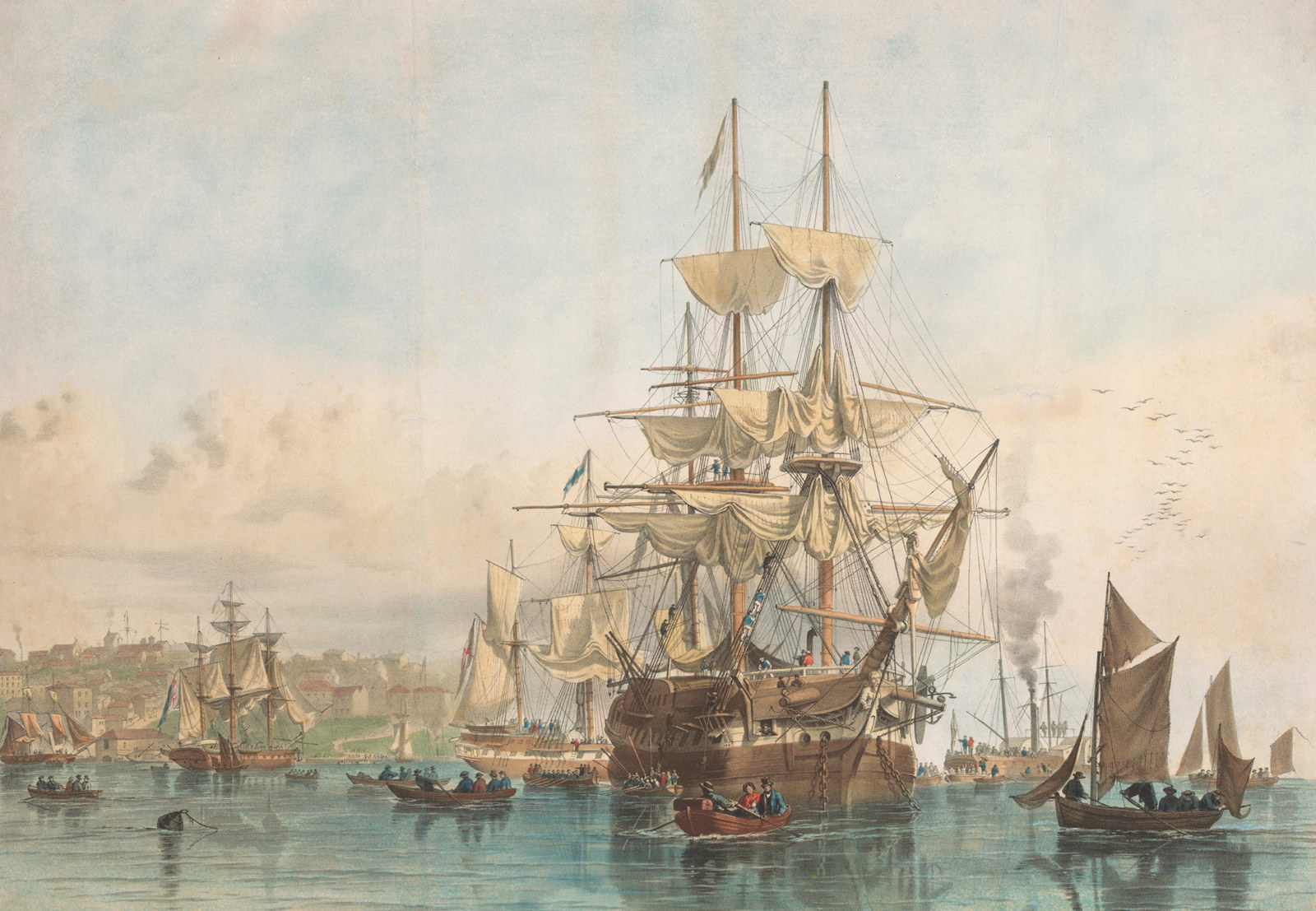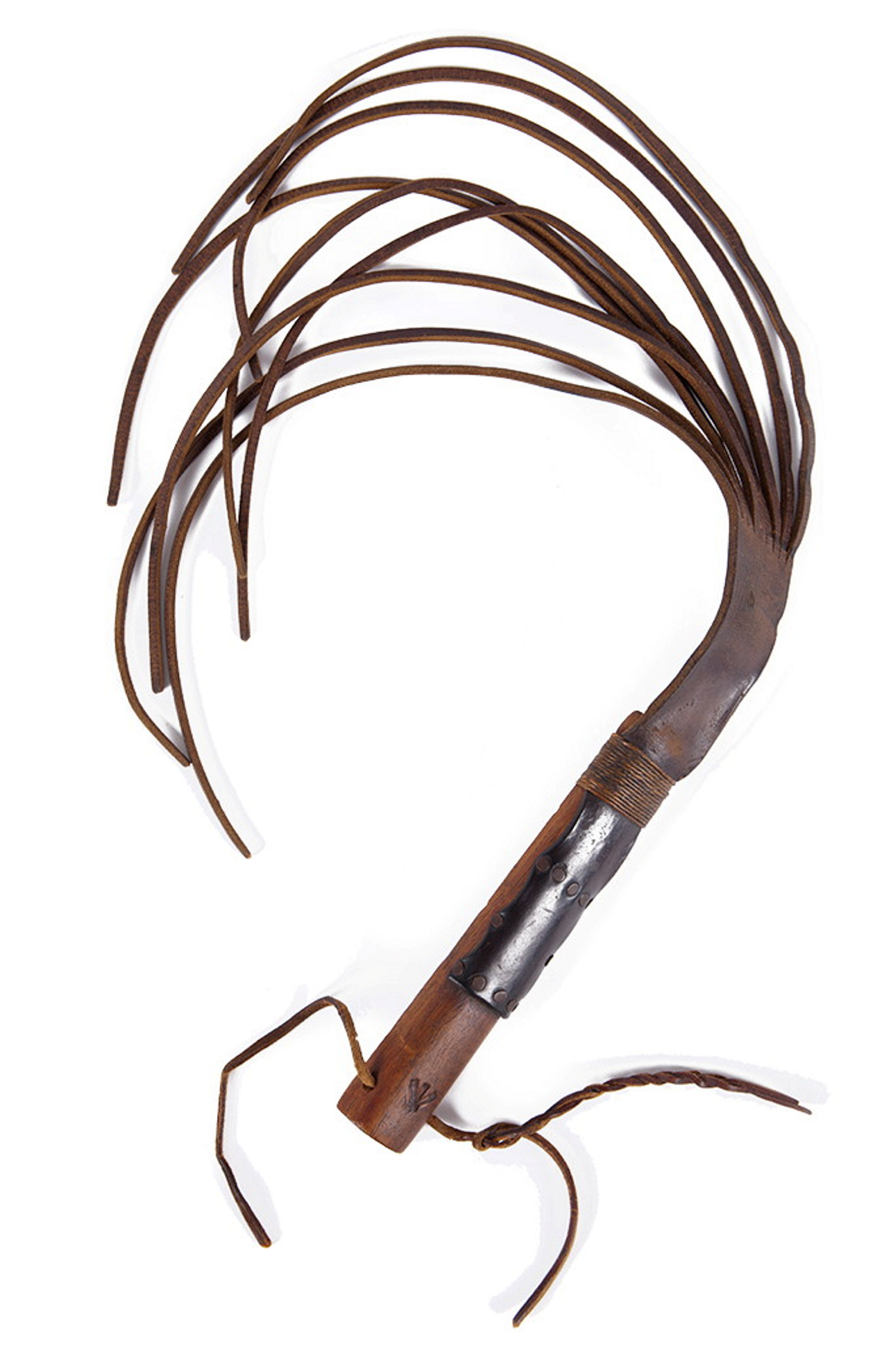John Knatchbull
Naval captain, robber, murderer, writer
Arrived 1825 on Asia
Armed robbery was a relatively common form of theft for which convicts were transported. Despite being given a 14-year sentence for the crime, John Knatchbull could not resist the urge to reoffend.
John Knatchbull, a Royal Navy captain, was convicted (intriguingly under the alias John Fitch) in Surrey, England, of stealing with ‘force and arms’. He arrived in Sydney on the Asia in 1825. In 1832 he was charged with forging the signature of a judge, and sentenced to seven years on Norfolk Island. On his return to Sydney, where he was housed at the Hyde Park Barracks, Knatchbull pleaded with the Governor for his freedom. Not long after receiving his ticket of leave in 1842, he was charged with the murder of shopkeeper Ellen Jamieson during an attempted robbery. Again he was held at the barracks before being transferred to Darlinghurst Gaol, where he wrote his widely read memoirs. Knatchbull was hanged by executioner Alexander Green on 13 February 1844.
The prisoner Cavenagh [sic] … said that he had never intended to do acts of personal violence when he took to the bush, which he said he was compelled to do by the tyranny he had experienced whilst in Hyde Park Barracks, the tyranny he had endured at Norfolk Island was nothing to that which he had experienced in Sydney
Hoping that another penal settlement would hold him down, the court sentenced Kavanagh to imprisonment at the supposedly escape-proof Port Arthur, but he escaped from there too. During two years on the run in Van Diemen’s Land, Kavanagh earned his reputation as a notorious bushranger, joining with Martin Cash and George Jones to rob coaches, homesteads and inns. Then, after accidentally shooting himself, Kavanagh had to give himself up or bleed to death. The court tried again to control him, and banished him back to Norfolk Island. But the defiant Kavanagh refused to be held down – he joined a group of convicts in a mutiny on the Island in 1846. And for that, the authorities finally had their way and executed him.
Related

Convict Sydney
The turning tide
During these final years of convicts at the Hyde Park Barracks, the newly designated city of Sydney gained its first outlying suburbs and industrial zones

Convict case study - John Knatchbull
This case study shows what types of records can be found in the State Archives collection
Published on
Convict Sydney
Browse all
Convict Sydney
Cat-o’-nine-tails
One of the most common forms of convict punishment was flogging (whipping) with a ‘cat-o’-nine-tails’

Convict Sydney
Port Arthur
A notorious penal station made up of more than 30 convict-built structures and substantial ruins located in evocative, largely uncleared bushland on the end of the Tasman Peninsula

Convict Sydney
Cockatoo Island
Cockatoo Island was an infamous island prison established in Sydney Harbour from 1839 to 1869 for reoffending convicts and hardened criminals
![[Portrait of a man in the dock]](https://images.mhnsw.au/fotoweb/embed/2024/07/4ed595c1a86540bbbd08e47579e9b51d.jpg)
Convict Sydney
Lawrence Kavanagh
Kavanagh’s courage and spirit led him into further crimes after arriving in Sydney – bushranging, escape and attempted robbery under arms, which saw him transported again, to Norfolk Island for 14 years in 1831
